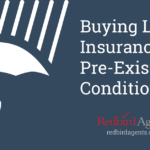What are the hidden fees and charges in car insurance policies? That’s the million-dollar question many drivers grapple with. Insurance policies, notorious for their dense jargon and fine print, often conceal extra costs that can significantly inflate your premiums. From seemingly innocuous administrative fees to unexpected charges related to claims and renewals, understanding these hidden expenses is crucial for keeping your finances in check.
This deep dive will uncover those sneaky charges, empowering you to navigate the world of car insurance with confidence and save money.
We’ll dissect common insurance terms, expose ambiguous wording designed to obscure fees, and reveal how seemingly small charges can add up over time. We’ll explore administrative fees, claims-related costs, renewal surprises, and the impact of optional coverages and payment methods. Get ready to become a car insurance savvy shopper!
Understanding Policy Jargon: What Are The Hidden Fees And Charges In Car Insurance Policies

Navigating the world of car insurance can feel like deciphering a foreign language, especially when it comes to understanding the often-hidden fees lurking within the fine print. Insurance companies frequently employ complex terminology and ambiguous wording to obscure these extra charges, making it difficult for consumers to fully grasp the true cost of their coverage. This section will break down common insurance terms and phrases that often mask additional costs, empowering you to become a more informed and savvy policyholder.Insurance companies utilize complex language to deliberately obfuscate fees, making it challenging for the average person to understand the full financial implications of their policy.
This is often achieved through the use of technical terms, lengthy sentences, and strategically placed clauses that bury the less desirable details. The goal is to make it difficult to compare policies effectively, leading to potentially higher premiums and unexpected expenses.
Ambiguous Wording and Hidden Costs
Many insurance policies contain clauses that are deliberately vague or use double meanings to create ambiguity regarding additional charges. For example, phrases like “administrative fees” or “processing charges” can encompass a wide range of costs, making it difficult to determine what exactly is being charged and why. Similarly, terms like “optional coverage” might be presented as an add-on, but might actually be a necessary component of the basic policy, resulting in an inflated premium.
The use of such language allows insurance companies to add fees without explicitly stating their nature or amount.
Common Policy Terms and Hidden Cost Implications
The following table clarifies common policy terms and their potential hidden cost implications. Understanding these terms is crucial for identifying and avoiding unexpected charges.
| Policy Term | Description | Potential Hidden Cost | Example |
| Deductible | The amount you pay out-of-pocket before your insurance coverage kicks in. | Higher deductibles might seem to lower premiums, but can lead to significant upfront costs in case of an accident. | A $1000 deductible means you pay the first $1000 of repair costs. |
| Administrative Fees | Charges for handling paperwork and processing claims. | These fees can vary widely and might not be clearly stated upfront. | A $50 fee for processing a claim, regardless of the claim amount. |
| Optional Coverage | Additional coverage options beyond the basic policy. | What seems optional might be necessary for comprehensive coverage, increasing the overall cost. | Roadside assistance, which might be presented as optional but is often crucial. |
| Usage-Based Insurance (UBI) | Insurance premiums based on driving habits tracked through telematics. | Hidden surcharges might be applied based on driving scores or unexpected data usage fees. | Higher premiums due to exceeding speed limits or frequent hard braking, even if no accidents occur. |
Administrative Fees and Processing Charges
Navigating the world of car insurance can feel like deciphering a secret code, especially when it comes to those sneaky extra charges. While the premium is the big ticket item, administrative fees and processing charges can significantly inflate your total cost. Understanding these hidden costs is crucial to keeping your insurance budget under control. This section will shed light on common administrative fees, their triggers, and strategies to minimize them.Administrative fees are essentially charges levied by insurance companies for handling various tasks related to your policy.
Unveiling hidden car insurance costs can be tricky; things like administrative fees or policy cancellation charges often sneak in. Understanding these sneaky extras is just as important as knowing how to pick the right coverage, much like learning how to choose the right travel insurance for backpacking trips requires careful scrutiny of policy details. Similarly, thoroughly reviewing your car insurance policy before signing on the dotted line will save you from unexpected financial surprises later on.
These aren’t directly tied to your coverage but rather to the administrative processes involved in managing your account. They’re often small individually, but they can add up over time, creating a substantial hidden cost.
Types of Administrative Fees
Several situations can trigger administrative fees. For example, if you request a duplicate policy document, change your payment method, or make multiple payment adjustments, you might encounter these charges. Late payment fees are a particularly common example; if your payment isn’t received by the due date, you’ll likely face a penalty. Similarly, fees may apply if you need to make changes to your policy details after the initial application, such as adding a driver or changing your address.
These charges can vary widely depending on the insurance company and the specific service requested.
Administrative Fee Ranges and Payment Method Variations
The typical range for administrative fees can vary significantly, from a few dollars to several tens of dollars per incident. Payment method can influence these fees. For instance, paying by check might incur a smaller fee compared to paying via a credit card, due to the added processing costs associated with credit card transactions. Some companies might even offer discounts for automatic payments, effectively offsetting or eliminating potential administrative fees.
It’s crucial to check your insurer’s fee schedule for precise details.
Strategies to Minimize or Avoid Administrative Fees
Understanding how these fees arise empowers you to avoid them. Proactive policy management is key.
- Pay on Time: This is the single most effective way to avoid late payment fees. Set up automatic payments or reminders to ensure timely payments.
- Review Your Policy Regularly: Identify potential changes early and contact your insurer to make adjustments before incurring fees for last-minute changes.
- Choose Convenient Payment Methods: Opt for payment methods that offer lower or no administrative fees. Check if your insurer offers discounts for automatic payments.
- Keep Accurate Records: Maintain detailed records of all your payments and policy changes to avoid disputes regarding fees.
- Read the Fine Print: Carefully review your policy documents to understand all applicable fees and charges. Don’t hesitate to contact your insurer for clarification if needed.
Fees Related to Claims and Coverage

Navigating the world of car insurance claims can be surprisingly complex, especially when unexpected fees pop up. Understanding these costs beforehand can save you from a nasty financial surprise when you need your insurance most. This section will illuminate the various fees associated with filing a claim and help you compare offerings from different providers.
Deductibles and Co-pays
Deductibles represent the amount you pay out-of-pocket before your insurance coverage kicks in. This amount varies depending on your policy and the type of coverage. For example, a comprehensive policy might have a higher deductible than a liability-only policy. Co-pays, on the other hand, are fixed amounts you pay for specific services, such as a rental car while your vehicle is being repaired.
Both deductibles and co-pays are common and explicitly stated in your policy documents, yet many overlook their impact on overall claim costs. A higher deductible usually translates to lower premiums, but remember, you’ll be responsible for a larger initial payment in the event of a claim.
Administrative Processing Fees
Many insurance companies levy administrative processing fees for handling your claim. These fees cover the costs associated with investigating the accident, processing paperwork, and managing communication. While the amount varies widely between insurers, these fees can add up, especially for complex claims. Some insurers may waive these fees under certain circumstances, such as for claims involving severe accidents or natural disasters.
It’s crucial to carefully review your policy documents and inquire about potential administrative fees before filing a claim.
Navigating the world of insurance can be tricky, especially with those sneaky hidden fees in car insurance policies like administrative charges or optional add-ons. Understanding these costs is just as crucial as knowing how to effectively compare different options, much like learning how to compare different health insurance plans for families , to find the best fit for your family’s needs.
Similarly, carefully reviewing your car insurance policy for hidden charges ensures you’re getting the best value for your money.
Claim Processing Fees Comparison
Comparing claim processing fees across different insurance providers can be challenging due to the lack of standardized fee structures. However, by requesting detailed information about potential fees from multiple providers, you can make a more informed decision. For instance, some insurers might offer transparent fee schedules online, while others may require a direct inquiry. Remember to factor in all potential costs, including deductibles, co-pays, and administrative fees, when comparing insurance quotes.
Example Claim Scenarios and Associated Fees
| Claim Scenario | Insurer A | Insurer B | Insurer C |
| Minor Collision (Deductible $500) | $500 Deductible + $50 Admin Fee | $500 Deductible + $75 Admin Fee | $500 Deductible + $0 Admin Fee |
| Comprehensive Claim (Windshield Damage, Deductible $250) | $250 Deductible + $25 Admin Fee | $250 Deductible + $50 Admin Fee | $250 Deductible + $0 Admin Fee (if under $500) |
| Major Accident (Total Loss, Deductible $1000) | $1000 Deductible + $150 Admin Fee | $1000 Deductible + $100 Admin Fee | $1000 Deductible + $100 Admin Fee |
| Rental Car (after accident) | $30/day co-pay | $25/day co-pay | $40/day co-pay |
Note: These are hypothetical examples and actual fees will vary based on the specific policy, the claim details, and the insurer. Always refer to your policy documents and contact your insurer for accurate information.
Renewal and Cancellation Fees

Renewing your car insurance policy might seem straightforward, but hidden fees can easily inflate the cost. Understanding these potential charges is crucial to budgeting effectively and avoiding unpleasant surprises. This section will detail the fees associated with policy renewal and cancellation, highlighting common scenarios and offering tips to help you navigate this process smoothly.Policy renewal fees aren’t always explicitly stated upfront.
While the base premium will be adjusted based on factors like your driving record and the coverage you choose, additional fees can sneak in. These fees often stem from administrative processes, changes in coverage, or simply the act of renewing itself. Cancellation fees, on the other hand, are typically applied when you terminate your policy before its natural expiration date.
The amount of this fee varies depending on your insurer and the reason for cancellation.
Renewal Fee Breakdown
Renewal fees can encompass several components. A standard administrative fee might be added to cover the insurer’s processing costs. If you make changes to your policy during renewal—adding a driver, increasing coverage limits, or switching to a different vehicle—additional fees may apply. These fees are usually clearly stated in the renewal documentation but are often overlooked in the initial review.
For example, adding comprehensive coverage to an existing liability-only policy will almost certainly increase your premium. Similarly, adding a young, inexperienced driver to your policy will generally result in a higher premium than if only you were covered.
Circumstances Leading to Cancellation Fees
Cancellation fees are primarily designed to compensate the insurer for lost revenue and administrative costs. They’re usually triggered when you cancel your policy early. For example, if you sell your car and fail to notify your insurer promptly, you might incur a cancellation fee. Similarly, if you switch insurers before your current policy expires, a cancellation fee could be levied.
The specific circumstances and associated fees are usually Artikeld in your policy’s terms and conditions. Failing to pay your premiums on time can also lead to policy cancellation and potentially associated fees.
Examples of Unexpected Renewal Fees
Unexpected renewal fees can arise from seemingly minor adjustments. For instance, a change in your address might trigger a reassessment of your risk profile, potentially leading to a higher premium. Similarly, a seemingly insignificant change in your vehicle’s details (like a minor modification) might lead to an unexpected increase in your insurance premium, although this is less common.
Another common scenario is an increase in the base premium due to changes in the insurer’s overall risk assessment, often influenced by broader economic factors or claims experiences.
Tips for Avoiding Unexpected Renewal or Cancellation Fees
To minimize the risk of unexpected fees, consider these helpful strategies:
- Read your policy documents carefully before renewing or cancelling. Pay close attention to the fine print regarding fees and charges.
- Understand your policy’s cancellation terms and conditions. Know the consequences of early cancellation and the associated fees.
- Notify your insurer promptly of any changes that might affect your policy, such as a change of address, vehicle, or driver.
- Pay your premiums on time to avoid late payment fees and potential policy cancellation.
- Compare quotes from multiple insurers before renewing your policy. This can help you find a better deal and avoid unnecessary fees.
- Keep records of all communications with your insurer, including emails, letters, and policy documents.
Additional Coverage and Add-ons

Car insurance isn’t a one-size-fits-all product. Beyond the basic liability and collision coverage, a world of optional add-ons exists, each promising extra protection but also adding to your premium. Understanding these extras is crucial to avoid unexpected costs and ensure you’re getting the coverage you truly need. Failing to understand these options can leave you financially vulnerable in the event of an unforeseen circumstance.Adding extra coverage might seem like an unnecessary expense, but in certain situations, these add-ons can prove invaluable.
Let’s explore some common examples and help you determine which ones might be worth the investment for your specific circumstances.
Common Add-on Coverages and Their Costs
Several supplemental coverages often go unnoticed in standard policy descriptions. These additions, while not always necessary, can significantly impact your financial responsibility in the event of an accident or unforeseen event. The cost of these add-ons varies considerably depending on your location, insurer, and the specifics of your coverage. For example, roadside assistance might cost an extra $10-$20 per month, while gap insurance could add several hundred dollars annually to your premium.
- Roadside Assistance: This covers towing, flat tire changes, jump starts, and lockout services. Costs typically range from $10 to $20 per month, depending on the level of service.
- Rental Reimbursement: This covers the cost of a rental car while your vehicle is being repaired after an accident. The cost varies based on the daily rental allowance and the length of the repair period.
- Gap Insurance: This covers the difference between your car’s actual cash value and the amount you still owe on your loan if your car is totaled. The cost depends on the loan amount and the vehicle’s value, typically ranging from a few hundred to a thousand dollars annually.
- Uninsured/Underinsured Motorist Coverage: This protects you if you’re involved in an accident with an uninsured or underinsured driver. The cost depends on your state’s requirements and your chosen coverage limits.
- New Car Replacement: This coverage replaces your new car with a brand new car of the same make and model if it’s totaled within a specific timeframe (usually one to three years). This is a significantly more expensive add-on.
Evaluating the Value and Cost-Effectiveness of Optional Coverages
The decision of whether or not to add optional coverages should be based on a careful assessment of your individual circumstances and financial situation. Consider the likelihood of needing the coverage, the potential cost of not having it, and the cost of the add-on itself.For example, if you frequently drive in areas with high rates of uninsured drivers, uninsured/underinsured motorist coverage is a wise investment.
Conversely, if you have an older car with a low loan balance, gap insurance might be less crucial. A cost-benefit analysis is essential. Think: How much would it cost to replace your car if it were totaled? How much would it cost to cover the expenses of a rental car for several weeks? Weigh these potential costs against the monthly or annual premium for the optional coverage.
Determining the Necessity of Optional Coverages Based on Individual Needs
Consider your lifestyle, financial situation, and the age and value of your vehicle when deciding which add-ons are necessary. Someone with a new car and a significant loan balance might find gap insurance essential, while someone with an older car might not. Similarly, someone who frequently travels long distances might value roadside assistance more than someone who primarily drives short distances.
Always compare quotes from multiple insurers to ensure you’re getting the best possible price for the coverage you need. Don’t hesitate to ask your insurance agent to explain any add-ons you’re unsure about.
Payment Methods and Late Fees
Choosing your payment method for car insurance isn’t just about convenience; it can significantly impact your overall costs. While some insurers might not explicitly charge extra for certain payment options, the method you select can indirectly influence your premiums or lead to added fees if you’re late with payments. Understanding these nuances is crucial for keeping your insurance costs manageable.Payment methods influence insurance costs primarily through convenience fees and late payment penalties.
Opting for methods like automatic payments or electronic fund transfers often avoids extra charges, while using methods like mailed checks might expose you to potential delays and associated penalties. Moreover, consistent on-time payments contribute to a positive payment history, which can positively affect your insurance score and future premium calculations.
Payment Method Impact on Costs
The impact of payment methods on your car insurance premiums is often subtle but can accumulate over time. For instance, some insurers might offer a small discount for setting up automatic payments from your bank account, rewarding your consistent, timely payments. Conversely, paying by check or money order could lead to processing delays, increasing the risk of late payment fees.
While these differences might seem minor individually, they can add up considerably over the policy’s duration.
Late Payment Penalties
Late payment penalties are a common source of additional costs for car insurance. These penalties vary widely among insurance providers, ranging from a small percentage of your premium to a substantial fixed fee. It’s essential to check your policy documents carefully to understand the exact penalties for late payments. Many insurers impose a grace period, typically a few days, before assessing late fees.
However, exceeding this grace period will inevitably trigger the penalty.
Escalation of Late Fees Over Time
Late payment fees can escalate quickly. Imagine a $100 monthly premium with a 10% late fee. If your payment is late for one month, you’ll owe an additional $10. If the next payment is also late, you’ll incur another $10, plus potentially an additional fee for the previous month’s outstanding penalty. This compounding effect can significantly increase your overall insurance costs.
For example, consistently late payments could lead to an extra $120 or more annually on a $100 monthly premium. Some insurers might even suspend your coverage if payments remain consistently delinquent.
Consequences of Late or Missed Payments
The following flowchart illustrates the potential consequences of late or missed car insurance payments:[Flowchart Description: The flowchart begins with a “Payment Due” box. An arrow branches to “Payment Received on Time” leading to a “Policy Remains Active” box. Another arrow from “Payment Due” leads to “Payment Late.” This branches to “Within Grace Period?” A “Yes” answer leads to “Payment Processed; No Penalty.” A “No” answer leads to “Late Fee Applied.” From “Late Fee Applied,” an arrow leads to “Repeated Late Payments?” A “Yes” leads to “Possible Policy Cancellation” and a “No” leads back to “Payment Due.” The “Possible Policy Cancellation” box shows arrows leading to “Coverage Lapsed” and “Reinstatement Possible (with higher premiums).”]
Regional Variations in Fees
Car insurance, while seemingly a standardized product, reveals surprising regional variations in its pricing and hidden fees. These differences aren’t simply about population density or accident rates; they reflect a complex interplay of state regulations, local competition, and even the prevalence of specific types of vehicles and driving conditions. Understanding these variations is crucial for consumers to accurately compare quotes and avoid unexpected costs.Geographic location significantly impacts the presence and amount of hidden fees in car insurance policies.
Factors such as state-mandated coverage levels, the competitive landscape of insurers in a given area, and the frequency and severity of accidents all play a role. For instance, states with higher minimum liability coverage requirements might see higher premiums, but potentially fewer “hidden” add-ons because the base policy already includes more comprehensive protection. Conversely, areas with intense competition among insurers may result in fewer hidden fees as companies strive to attract customers with transparent pricing.
State-Mandated Coverages and Their Impact
State regulations directly influence the cost of insurance. States with mandatory uninsured/underinsured motorist (UM/UIM) coverage, for example, will generally have higher base premiums than states without such mandates. This is because the insurer is legally obligated to cover damages caused by drivers without sufficient insurance, increasing the potential payout for claims. Similarly, states with higher minimum liability limits will reflect that in higher premiums.
These mandatory coverages, while not strictly “hidden,” contribute to the overall cost and can vary significantly across states. For example, a driver in New York, with its relatively high minimum liability requirements, will likely pay more than a driver in a state with lower minimums, even if both drivers have similar driving records.
Competitive Landscape and Pricing Strategies, What are the hidden fees and charges in car insurance policies
The level of competition among insurance providers within a specific region also plays a crucial role. In areas with a limited number of insurers, consumers may find fewer choices and potentially higher premiums with less transparent pricing. Conversely, regions with many competing companies often see insurers engaging in price wars, potentially leading to lower premiums and more emphasis on clear and upfront pricing to attract customers.
This can result in fewer hidden fees or a more transparent presentation of optional add-ons. For instance, a densely populated urban area with numerous insurers may offer more competitive rates and less emphasis on add-on sales compared to a rural area with limited insurer presence.
Regional Accident Rates and Claim Frequencies
Areas with high accident rates and claim frequencies will generally have higher insurance premiums. This is a direct reflection of the increased risk insurers face in those regions. Insurers use actuarial data to assess risk and adjust premiums accordingly. This means that drivers in areas with a history of high-frequency accidents or high-severity crashes will likely face higher premiums, even if their personal driving records are impeccable.
This isn’t a hidden fee per se, but it’s a significant regional factor influencing the overall cost of insurance. Coastal areas prone to hurricanes or regions with frequent hailstorms, for example, might see higher premiums due to the increased likelihood of weather-related claims.
Illustrative Regional Differences in Average Insurance Costs
Imagine a map of the United States. The Northeast and some coastal regions might be depicted in darker shades of red, representing higher average insurance costs due to factors like higher population density, more frequent accidents, and potentially stricter state regulations. In contrast, some Midwestern and Southern states might be shown in lighter shades of green or yellow, indicating lower average costs, potentially due to lower population density, fewer accidents, and less stringent regulatory environments.
However, this is a simplification, as other factors like the age and type of vehicles on the road can also influence the final price.


